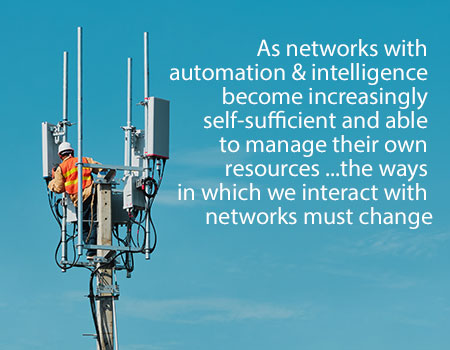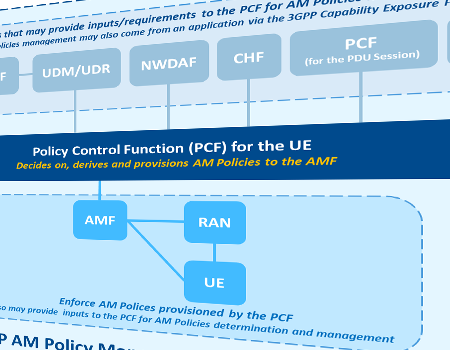By the General Chairs of 5G-ACIA: Andreas Mueller (Bosch) and Afif Osseiran (Ericsson)
First published December 2024, in Highlights Issue 09
The industrial sector has been among the most promising verticals for 5G since its early days, holding the potential to accelerate Industry 4.0 developments and enable new levels of efficiency, productivity, flexibility and ease-of-use. For the mobile industry, the industrial domain represents a promising business opportunity with the perspective to generate significant additional revenue beyond the classical consumer business. This was also underscored in many presentations at the IMT-2030 workshop organized by 3GPP SA1 in Rotterdam in May 2024.
However, despite the initial enthusiasm, Industrial 5G adoption is lagging initial expectations. This doesn’t indicate a lack of progress but instead shows that achieving the full vision requires more time than originally anticipated. To set Industrial 6G on a strong footing, it’s critical to reflect on the lessons learned from 5G from the very beginning. Below, the General Chairs of 5G-ACIA share their views on the past, present and future of Industrial 5G and 6G.
Reflections on Industrial 5G: Achievements and Challenges
The 5G Alliance for Connected Industries and Automation (5G-ACIA) was established in 2018 to create a global forum for stakeholders in the ICT and Operating Technologies (OT) industries to drive and shape Industrial 5G developments. Representing the voice of the manufacturing sector in 3GPP as a market representation partner, 5G-ACIA has identified and analyzed numerous industrial use cases and requirements, many of which were discussed in 3GPP SA1. Industrial applications are characterized by multi-dimensional requirements, such as high performance (e.g., low latency and high reliability), specialized functions (e.g., non-public networks and time synchronization), and specific operational needs (e.g., ease of use).
Starting with Release-16, 3GPP introduced features critical to industrial use cases, including ultra-reliable low-latency communication (URLLC), support for time-sensitive networking (TSN), high-accuracy positioning, and 5G NR RedCap for reduced capability devices. Many companies have tested Industrial 5G through dedicated testbeds, including those facilitated by the 5G-ACIA testbed program.
Despite these advancements, adoption in manufacturing is still below initial expectations. This gap can be attributed to several factors:
- Standards vs. Implementation Gap: In early 5G stages, consumer-focused features took priority. However, fortunately, industry-specific features are gaining more and more traction nowadays.
- Different Life Cycles: The OT industry has substantially longer equipment life cycles than the ICT industry. While consumers upgrade devices every few years, industrial equipment often lasts 20 years or even longer.
- Device Ecosystem Challenges: Building a rich ecosystem of compatible devices takes time, and there is a “chicken-and-egg” dilemma between device availability and network deployment.
- Holistic Solution Complexity: 5G is typically only one part of an industrial solution, requiring careful integration with existing systems. This is only possible with the right know-how and mindset, which also takes time to be established.
These challenges are gradually being addressed, and the good news is that finally more and more manufacturers are beginning to incorporate 5G into their production systems.
Key Lessons Learned from 5G for 6G Developments
One of the most important lessons from 5G is the need for realistic expectation management. For the OT industry, it’s not just about achieving the best-case performance with a theoretical standard but delivering reliable, real-world performance with commercially available products. The solution must also be cost-competitive, providing a positive return-on-investment (RoI) within a reasonable time and an attractive offering compared to other (non-3GPP) alternatives. While public networks rely on 3GPP standards, enterprise applications (like manufacturing) clearly have other options.
To ensure 6G meets industrial needs, the early involvement of the OT industry in its development is crucial. By collaborating from the start, ICT and OT industries can build a shared understanding of the challenges and solutions needed for Industrial 6G. Organizations like 5G-ACIA are essential in this process, especially as many OT companies lack the resources to engage directly with 3GPP.
Moreover, rather than overloading 6G with numerous features and implementation options, it would be prudent to prioritize those with the highest likelihood of being implemented and adding clear value. This focus would help streamline the standards, reduce complexity, and ultimately bring down costs.
First Perspectives on Industrial 6G
For many industrial players, a critical requirement for 6G is that it builds upon 5G’s foundations, ensuring compatibility with current and planned investments, given the long life cycles of industrial equipment and facilities. Aligning with the OT industry’s operational timelines, 6G should continue to support the use cases already identified for Industrial 5G.
Key requirements for 6G include:
- High Dependability and Resilience: Industrial environments require precise time synchronization, end-to-end latencies of ~1 ms, and robust reliability, which is not yet fully supported in practice.
- Simplified Operations: Operational complexity must be further reduced, and non-public network integration with enterprise IT should be further simplified, such as through advanced capability exposure.
- Flexible and Modular Design: Manufacturing facilities are becoming more versatile, so future networks should be equally adaptable, supporting modularity and flexibility.
- Seamless Interworking with Non-3GPP Systems: 6G must integrate seamlessly with other industrial networks, such as wired TSN or Industrial Ethernet. Cost-effectiveness, rather than just the best technical performance, should be prioritized to achieve a favorable cost-benefit ratio.
New Capabilities for 6G: Emerging Technologies and Their Industrial Potential
Several advanced capabilities are central to current 6G discussions and could unlock new opportunities for industry. These include:
- Integrated Sensing and Communication (ISAC): Industrial settings already rely on extensive sensing capabilities today, but these are typically separate from the communication infrastructure. By integrating sensing into the network, complexity and costs could be reduced, enabling applications such as real-time monitoring, digital twin enrichment, and predictive maintenance.
- AI and Machine Learning (AI/ML): AI could be deeply embedded in 6G for tasks such as data management, aggregation, and model distribution. In industrial networks, AI/ML could simplify network management, enhance flexibility, and support predictive maintenance. Already vital to the industrial sector, AI unlocks significant optimization potential, and its integration into 6G could further enhance automation and efficiency.
- Real-Time Digital Twins: Digital twins are becoming essential in manufacturing, enabling virtual replicas of physical assets for monitoring and optimization. In 6G, digital twins will demand features like higher uplink capabilities and precise space-time synchronization. Furthermore, digital twins of the network itself could interact with digital twins of production facilities, improving overall operation and management, for example.
Clearly, these are only some very initial perspectives on Industrial 6G, and organizations like 5G-ACIA are continuously working to identify and assess the full potential that 6G may bring to the manufacturing industry.
Conclusion
As the 3GPP and research communities turn their focus toward 6G, it’s important not to overlook the ongoing work needed to fully realize the Industrial 5G vision. Initial expectations for 5G adoption in industry were ambitious, especially regarding the timeline. However, 5G is gradually transitioning from theory to practice in manufacturing. Lessons learned from 5G should be considered in the development of 6G from the outset.
A collaborative approach between the ICT and OT industries, grounded in realistic expectations and a clear focus on RoI, will be essential. By prioritizing these elements, 6G can deliver new capabilities, such as advanced sensing, AI-driven automation, and sustainable connectivity solutions that will elevate industrial operations even further than Industrial 5G, paving the way for a more connected, efficient, and intelligent future.



 Technology
Technology




